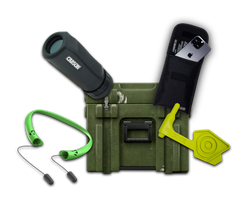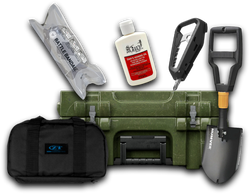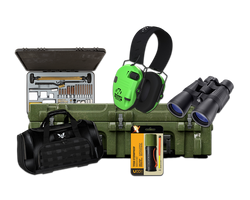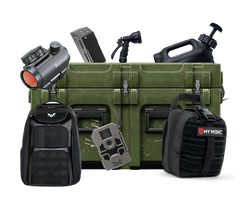How to Choose a Carabiner: A Comprehensive Guide for Tactical Enthusiasts
Table of Contents
- Introduction
- Understanding Carabiner Basics
- Carabiner Shapes
- Carabiner Gate Types
- Carabiner Size and Weight
- Carabiner Strength Ratings
- Choosing the Right Carabiner for Your Needs
- Conclusion
- FAQ
Introduction
Imagine the moment when you're scaling a cliff face, adrenaline pumping, the wind rushing past your ears. In that critical moment, the strength of your gear is paramount, and at the heart of that gear is the carabiner. This small, yet mighty piece of equipment plays a crucial role in climbing, rescue operations, and outdoor adventures. Yet, many enthusiasts often ask, how to choose a carabiner that meets their specific needs? This guide aims to demystify the selection process and empower you to make informed decisions.
Carabiners aren’t just metal loops; they are essential tools that can mean the difference between safety and danger. With a plethora of shapes, sizes, and locking mechanisms available, understanding these variables is crucial. Whether you're a seasoned climber, a tactical professional, or a casual outdoor enthusiast, this article will equip you with the knowledge you need to choose the right carabiner for your activities.
By the end of this post, you'll grasp the key factors influencing carabiner selection, including shape, gate type, size, weight, and strength. Additionally, we'll delve into the different applications of carabiners and why quality matters. We will also highlight how Crate Club's curated gear can enhance your outdoor experience, making you better prepared for any situation.
Understanding Carabiner Basics
The Role of Carabiners
Carabiners are versatile connectors used in climbing, rope access, caving, and various tactical applications. They serve multiple purposes, including:
- Connecting ropes and harnesses: Ensuring a secure attachment for climbing and belaying.
- Anchoring gear: Providing a reliable connection for climbing gear and emergency equipment.
- Rescue operations: Facilitating safe and efficient rescue efforts in various scenarios.
Given their importance, selecting the right carabiner is vital for performance and safety.
Key Considerations for Choosing a Carabiner
When pondering how to choose a carabiner, consider these main factors:
- Shape
- Gate Type
- Size and Weight
- Strength Ratings
Each of these elements contributes to the carabiner's functionality and suitability for specific tasks.
Carabiner Shapes
The shape of a carabiner significantly impacts its performance and application. Let's explore the most common shapes:
1. D-Shaped Carabiner
The D-shape is the most popular design among climbers and tactical users.
- Advantages: Stronger than other shapes due to its load distribution along the spine, making it ideal for various applications.
- Disadvantages: Slightly heavier than other options.
2. Asymmetric D-Shaped Carabiner
Similar to the traditional D-shape but with a narrower end, the asymmetric D offers a lightweight alternative:
- Advantages: Larger gate opening for easier clipping and reduced weight.
- Disadvantages: Less internal space compared to the standard D shape.
3. Pear-Shaped Carabiner (HMS)
These carabiners are designed for specific applications like belaying and rappelling:
- Advantages: Excellent for multi-pitch climbing and facilitates easy rope manipulation.
- Disadvantages: Generally heavier and can be more expensive.
4. Oval Carabiner
The oval design is the original carabiner shape and is known for its versatility:
- Advantages: Provides a uniform load distribution and is great for aid climbing.
- Disadvantages: Typically less strong than D and asymmetric shapes.
Summary of Carabiner Shapes
Understanding the unique advantages and disadvantages of each shape is crucial to selecting the right one for your needs. Consider your specific use case and the type of climbing or tactical activity you will be engaging in.
Carabiner Gate Types
The gate type determines how the carabiner opens and closes. Here are the common types:
1. Straight Gate Carabiners
These are the most common, featuring a simple, straight opening:
- Advantages: Durable and easy to use.
- Disadvantages: Heavier than some alternatives.
2. Bent Gate Carabiners
Designed to facilitate quick rope clipping, bent gates are ideal for the rope end of quickdraws:
- Advantages: Make clipping effortless and are durable.
- Disadvantages: Typically heavier than wiregate models.
3. Wiregate Carabiners
Utilizing a wire loop instead of a solid gate, wiregates are lightweight and reduce gate lash:
- Advantages: Lighter and less prone to freezing in wet conditions.
- Disadvantages: May be less durable than solid gate options.
4. Locking Gate Carabiners
These come with additional security features that prevent accidental openings:
- Advantages: Enhanced safety for critical connections.
- Disadvantages: Heavier than non-locking models.
Summary of Gate Types
Selecting the right gate type is essential for ensuring safety and convenience in your outdoor activities. Consider how frequently you’ll need to clip and unclip the carabiner, and choose a type that aligns with your needs.
Carabiner Size and Weight
Understanding Carabiner Size
Carabiners come in various sizes, affecting their usability:
- Larger Carabiners: Easier to handle and clip, suitable for belaying and rappelling.
- Smaller Carabiners: Lighter and take up less space, though they may be harder to clip.
Considering Carabiner Weight
While lighter gear is often preferable, overly lightweight options can compromise usability:
- Pros of Lightweight Carabiners: Easier to carry during long climbs or hikes.
- Cons of Lightweight Carabiners: May have lower strength ratings and shorter lifespans.
Summary of Size and Weight
Evaluate the balance between size and weight based on your specific activities. A slightly heavier carabiner might provide the durability and strength you need.
Carabiner Strength Ratings
Understanding strength ratings is crucial for ensuring safety. Carabiners are rated for strength in three directions:
- Major Axis: Strength when loaded along the spine, crucial for climbing.
- Minor Axis: Strength when loaded sideways, which is typically lower.
- Gate Open: Strength when the gate is open, significantly less than when closed.
Importance of Strength Ratings
Selecting a carabiner with appropriate strength ratings is essential, especially in high-stress situations. Always check the strength ratings marked on the spine of the carabiner.
Choosing the Right Carabiner for Your Needs
Now that you understand the fundamental factors, let’s consider how to apply this knowledge.
Climbing Types and Recommended Carabiners
- Sport Climbing: Asymmetric D carabiners with straight gates for quickdraws.
- Trad Climbing: Asymmetric D or oval carabiners for racking gear.
- Belaying and Rappelling: Large pear-shaped locking carabiners.
- General Use: A mix of wiregate and bent gate carabiners for versatility.
Practical Tips for Selection
- Test the Feel: If possible, handle different carabiners to see which feels comfortable in your hand.
- Check Compatibility: Ensure the carabiner works well with your other gear.
- Read Reviews: Learning from others' experiences can provide valuable insights.
Conclusion
Choosing the right carabiner is not merely a matter of preference; it’s a critical decision that impacts your safety and performance in outdoor activities. By considering the factors of shape, gate type, size, weight, and strength, you can select a carabiner that aligns with your specific needs.
At Crate Club, we understand the importance of high-quality, reliable gear. Our subscription service offers curated tactical gear and survival tools, including a variety of carabiners suited for different applications. Explore our offerings and elevate your outdoor experience:
Equipped with this knowledge, you’re now ready to make informed choices and ensure that your adventures are both safe and enjoyable. Remember, quality gear is essential for peak performance in the field, and at Crate Club, we’re here to support you every step of the way.
FAQ
What is the strongest type of carabiner?
The D-shaped carabiner is generally recognized as the strongest because it distributes loads effectively along its spine.
How do I know if a carabiner is right for climbing?
Ensure the carabiner is UIAA and CE certified, indicating it meets safety standards. Look for specific features that suit your climbing style.
Can I use a non-locking carabiner for belaying?
It is recommended to use locking carabiners for belaying to prevent accidental openings, ensuring maximum safety.
How do I maintain my carabiners?
Regularly inspect your carabiners for signs of wear or damage. Clean them with warm, soapy water and dry them thoroughly to prevent corrosion.
Where can I buy high-quality carabiners?
You can explore a selection of high-quality carabiners at our Crate Club Shop, where we offer trusted brands and durable gear for all your outdoor needs.
Share this article



